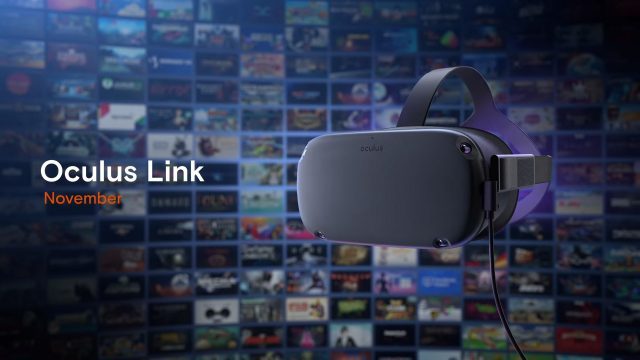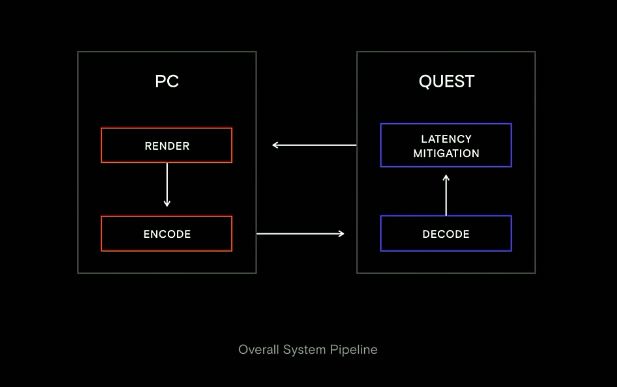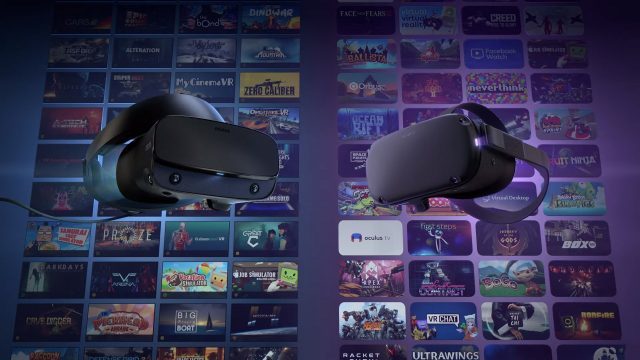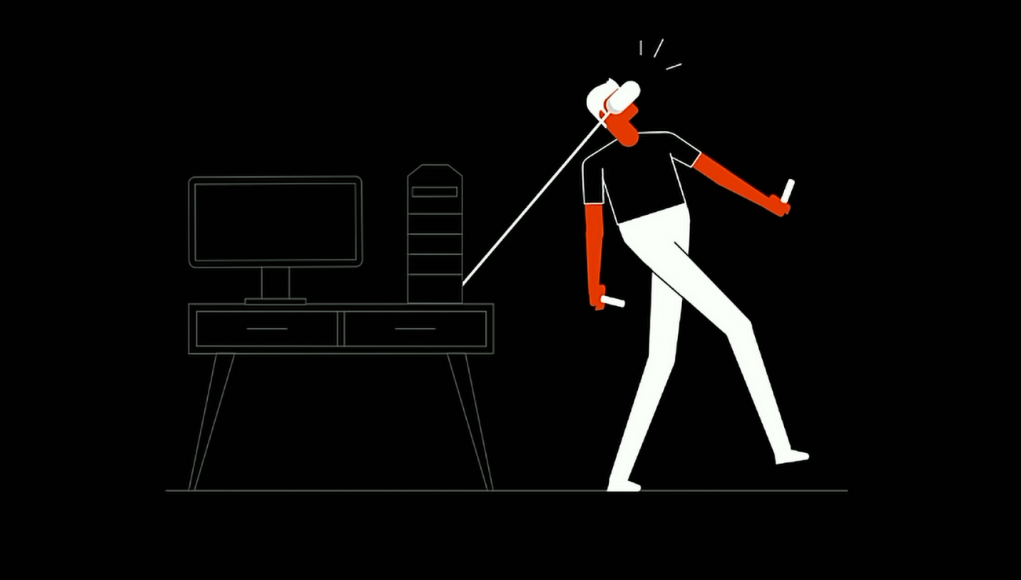Oculus announced last month that Quest will soon be able to play Oculus games on PC via a new feature called Oculus Link. Though Oculus Link will immediately add big boost in value to existing Quest headsets, perhaps even more interesting is what this announcement tells us about next-gen Oculus headsets.
Oculus Link is set to launch in beta as a free update to Quest headsets in November. It allows users to connect their headset to a VR ready PC via a USB 3 cable and play “most” titles from the Oculus PC library.

We were impressed with the experience when we got to demo it last month and Oculus hasn’t been shy about saying that they’d eventually like to make the feature wireless. And while the added benefit of Oculus Link may even call into question the value of Rift S over Quest, the move tells us some very interesting things about the future of Oculus headsets.
Thou Cannot Giveth and Then Taketh Away
First and foremost, Oculus Link gives us good reason to expect that all future Quest headsets will also be compatible with PC content, and may even have some dedicated hardware to make the job easier. Here’s the thing: once Oculus puts this feature out into the wild, it can’t really take it back because it fundamentally alters the headset’s capabilities.
Oculus Link invites Quest users to purchase from Oculus’ PC library. To turn around and remove the feature from future Quest headsets would not only invalidate whatever investment customers had made into the company’s PC library, it would also feel like taking away a major feature; sort of like if the first iPhone had a camera, but they removed the camera on the second iPhone—customers simply wouldn’t stand for it.
In that regard, the release of Oculus Link can be seen as a commitment from Oculus that its future high-end standalone headset will continue to be able to play both mobile and PC titles.
Move Fast and Break Things
The announcement of Oculus Link just a few months after Quest and Rift S hit store shelves also tells us something about Oculus’ approach to product development which seems to be changing as the company has steadily lost its core founders after being acquired by Facebook in 2014.
Now much more deeply under Facebook control, the ‘new Oculus’ isn’t going to hold back features from one headset just to make sure its product portfolio has a clear or comfortable delineation (we saw the first hints of this with their choice to release Rift S instead of a Rift 2). I’m certain that Oculus understood the implications of adding PC tethering to Quest and how it would call into question the value of Rift S (which sells for the same $400 price). Still, Quest owners clearly wanted the ability to play PC content, and Oculus said ‘if we can make this happen, let’s do it’. This is Facebook’s “move fast and break things” mantra at work.
What Does a Hybrid Oculus Quest Mean for a Next-gen Rift?
Less certain, but still potentially revelatory, is what Oculus Link could mean for Oculus’ next-gen Rift headset. If we are working under the assumption that Quest and its successors will be compatible with PC content from this point forward, it clearly opens the door for Oculus to make its PC product more clearly positioned for the high-end crowd. While Rift S currently stands as great entry-level value, many of Oculus’ loyal enthusiast customers saw it as a ‘sidegrade’ over the original Rift, and would have been happy to pay more than $400 for a higher-end Oculus headset if only that option was available.
If Quest, as a hybrid headset which can mobile and PC titles, serves as that entry-level option well enough, Oculus will need to either make its PC offering clearly the best way to experience Oculus PC content by pushing its specs and features into the next tier, or by cutting its price. There’s also another option… a wild card: Oculus could simply eliminate it’s PC-only headset and make their next headset serve as both the Quest 2 and the Rift 2. Oculus Qrift?
Wireless is Probably a New Priority for Oculus
Then there’s the question of wireless. With the traction they’re seeing with the tetherless Quest, I think Oculus is going to highly prioritize wireless for future headsets. They’ve already said that they’d like to make Oculus Link wireless eventually, and seem to be actively moving in that direction.
Now here’s the thing… if Quest, or perhaps Quest 2, were to get wireless PC streaming, could Oculus reasonably continue to have a tether on the equivalent Rift headset? My thinking is probably not….
In describing Oculus Link’s technical workings, the company has said it’s effectively a video streaming solution. And while today’s Oculus Link happens to transmit that stream over a tethered connection, the solution could easily work over a reliable wireless link as long as there’s sufficient bandwidth.

That means that a future Rift headset, let’s say a Rift 2, could use a ‘thin-client’ approach to be wireless out of the box. While Quest needs a full suite of on-board smartphone hardware to run a complete operating system as well as perform its own rendering and game processing, a ‘thin client’ headset would contain just enough on-board hardware to receive & decode a wireless video stream from a host PC.
This could be done with a dedicated chip that could be less expensive and consume less power than what’s needed for a full standalone headset (a smartphone processor and everything that comes with it). While Quest doesn’t have any dedicated chips in it specifically for PC tethering, Oculus said they did debate it, and alluded to a continuing interest in dedicated streaming chips by saying that if they had more control over the underlying hardware they would be able to create alternate streaming architectures which would be even more suitable for their streaming approach, potentially leading to higher visual quality and lower latency.
Of course there would still be bandwidth and wireless reliability issues to contend with. Even with a thin-client approach, which wireless link would be best is still up in the air, especially if Rift 2 were to have higher resolution than Rift S, as we’d expect.
– – — – –

One way or another, Oculus is moving into some uncharted territory as it turns Quest into a hybrid headset that can access both its mobile and PC libraries. Oculus is clearly trying to make its content and ecosystem more cohesive, and this will very likely guide decisions being made about Quest 2 and Rift 2.







